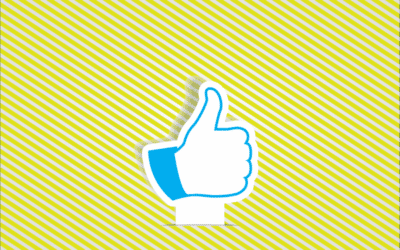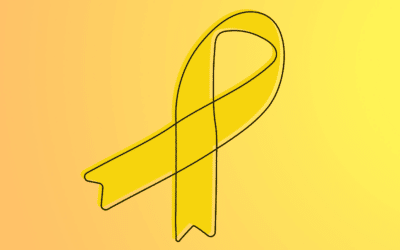9 Ways Nursing has Changed Over Time
Nursing is one of the most important professions in our society–and one that is rapidly growing. The nursing profession is constantly evolving alongside our society, and the rise of technology has only further pushed this evolution. While there are many ways the nursing profession will continue to change going forwards, let’s take a look at some of the biggest changes in nursing that have led us to where we are today.
Nurses are free to express themselves—as long as it doesn’t impede on the job done.
When the first sets of employment rules for nurses came out, getting hair done at a beauty shop or going to a dance hall was cause for employers to be concerned. Nurses were expected to uphold the strictest set of rules, including no body modifications, frequenting “shady” places, consuming alcohol, or smoking. Nurses now are often free to express themselves in any form they choose as long as they are able to do their job well. Many nurses have tattoos, piercings, and crazy hair colors. Creativity with body expression is a great way for people to look and feel their absolute best, and nurses should have the ability to live their lives in whichever way they choose!
Nurses are highly trained in their field.
In the early days, any woman who wanted to become a nurse could pursue the position without any formal training. Most of the skills were picked up from family members or by learning on the job. In fact, nurses were considered to act closer to wives of the patients than as formal medical practitioners. Formal nurse training courses weren’t even offered until the late 1800s, and it was sometime after that until they became a formal requirement. In present times, nurses are required to have formal education and government-recognized certifications. In certain nursing positions, advanced education is also required.
Nurses have highly variable schedules—and they span overall 24 hours of the day!
When the first nurses worked in the 1800s, many worked on a strict schedule. A typical schedule for nurses required them to report every day at 7am and leave at 8pm, except on days reserved for religious observation. Graduate nurses who were considered to be in good standing were given an additional evening off each week for being courted by male suitors. Nowadays, nurses have much more variable schedules. While some nurses work repetitive schedules week to week, many nurses work a few longer shifts that rotate between days each week. Many nurses also work night shifts in rotation with working during daylight hours. As for courting, employers definitely no longer assign specific times for employees to go on dates (although that would be nice).
The everyday work environment has dramatically shifted.
Nurses were originally found in two spots—either the battlefield or in homes. Nurses were often called to patient homes for injuries and illnesses, with traditional hospital settings being bypassed. Military groups also required the help of nurses, as soldiers were commonly being injured in battlefield settings. Now, however, nurses work in a wide array of environments. From hospitals and schools all the way to ski slopes and music festivals, nurses are considered the go-to health professional to have on staff in case of any emergency. This can be thanked to the growth of the profession and the increasing recognition for work nurses perform!
Nurses are considered healthcare leaders.
In the 1800s (and most of the 1900s), nurses were considered strictly in second-command to doctors. Nurses rarely had their own patients to diagnose and treat without at least running it by an on-call doctor. But with the national shortage of primary health care practitioners and the rising cost of healthcare, advanced practice registered nurses are becoming leaders in healthcare. Many offices offer for patients to choose nurses on staff to be their primary health provider. Many rural communities across America are also finding a shortage of family doctors, and advanced practice nurses are serving as the exclusive providers of healthcare within these communities.
Mobile technology is changing the field.
Early nurses generally served a specific community. Whether it was their local townships or working as part of a military group, nurses typically had a relatively defined set of patients. With the rise of telehealth, nurses are able to register as healthcare workers on various apps that are available to the public. People can call in for healthcare advice, diagnoses, and prescriptions from all over the globe. Not only does this mean the patient population served is widely variable day-to-day, but nurses must be able to effectively treat people from a wide range of cultures and backgrounds. This takes a high level of cultural awareness, not to mention an increasingly large repertoire of medical knowledge to pull from!
More patients, more specialties.
As telehealth and access to healthcare are on the rise, nurses are giving care to a bigger and bigger patient population. Because of this, more specialties are becoming available for nurses. Because our population is aging, geriatric and in-home nurse demands are on the rise. In addition to this, nurses specialized in global health or technological innovation are becoming critically important as our society progresses. There are also certifications designed specifically to address our current society. With mental health and health inequality awareness on the rise, many institutions are providing training courses and certifications intended to help nurses specialize their knowledge and expertise. With an ever-changing community comes ever-changing specialties!
Anyone can be a nurse.
When nursing first started, it was an occupation reserved exclusively for women—often young, white women. Nurses of different races were required to take different courses and did not work together. It was not until the mid-1900s that nursing began to diversify and become more inclusive, with the first male nurse being commissioned by the army in 1955! This changed the public perception of nursing and people from all different backgrounds began to pursue the profession. Today, nurses from all different countries, ethnicities, genders, sexualities, and cultures work together to push forward the profession and keep breaking down barriers.
Nurses became public health leaders.
With the turn of the 20th century and the industrial revolution, the general public became exposed to high levels of smog, pollution, and cramped living environments. Before this, nurses generally attended to immediate injury and illness without serving the general public. However, with the rise of environmental hazards, healthcare needs within the city rose too rapidly for healthcare professionals to keep up with. Nurses began to realize that this was not sustainable and started launching public health campaigns focused on preventative actions. This type of focus has carried into today’s nursing professionals, with many nurses being active in public health awareness and health education.





0 Comments